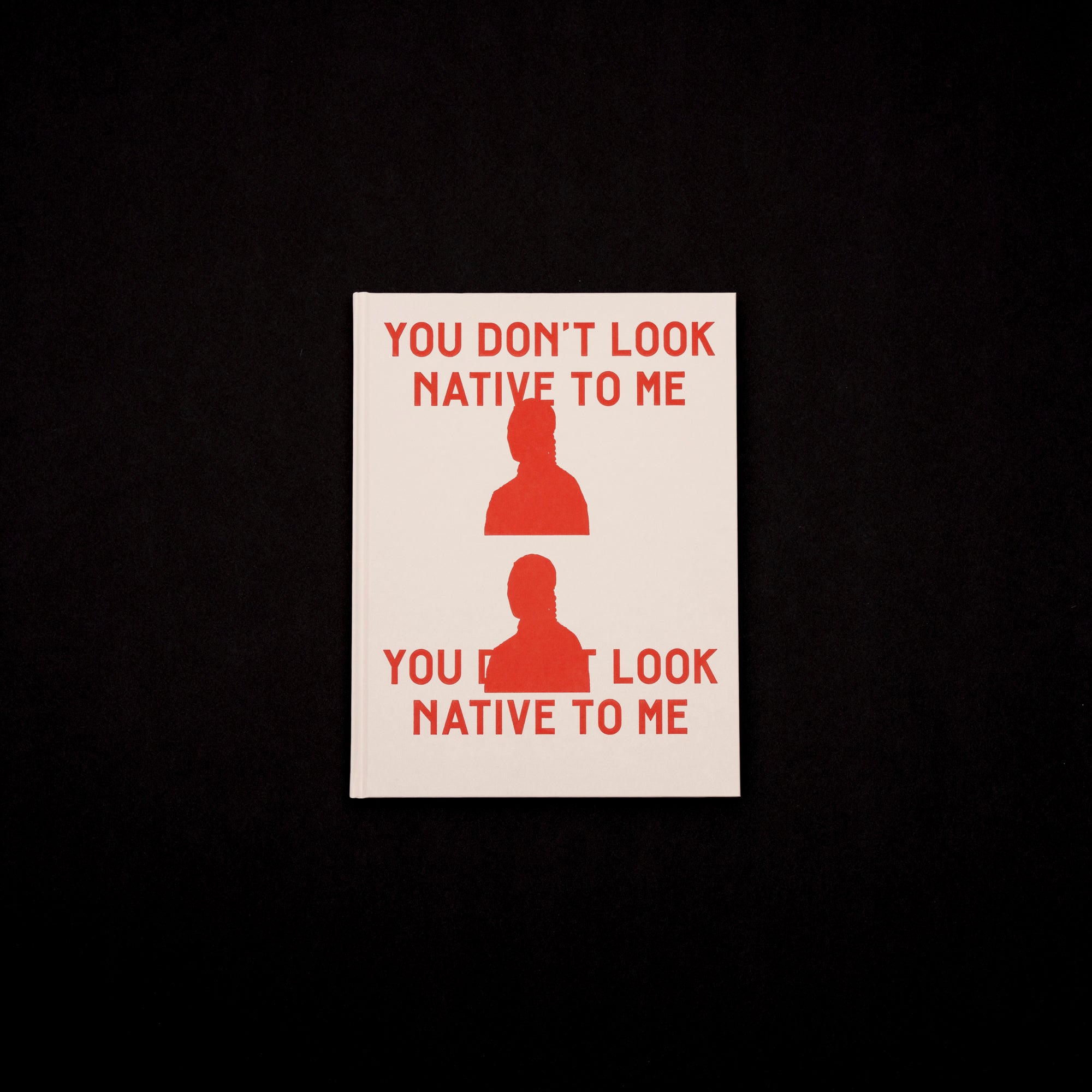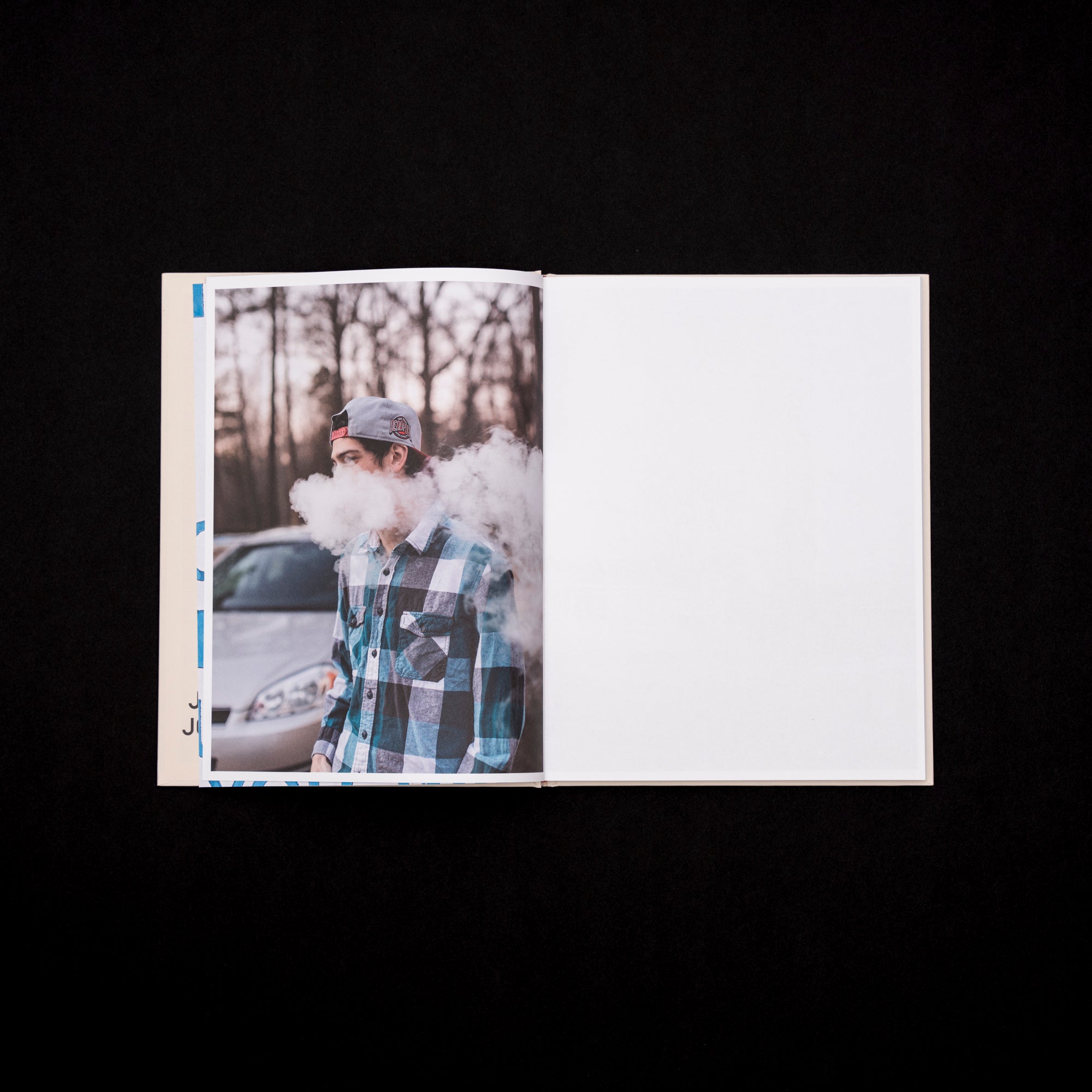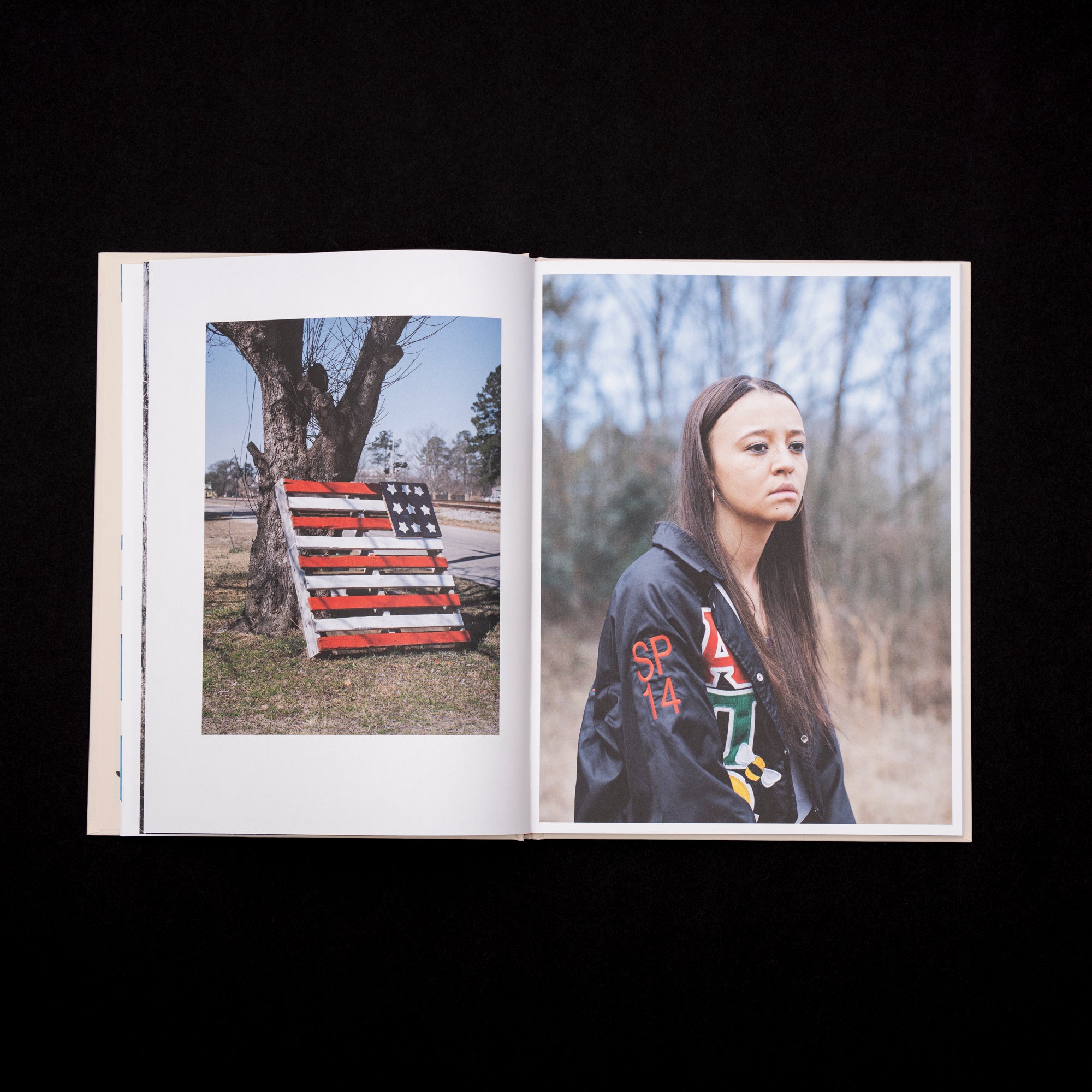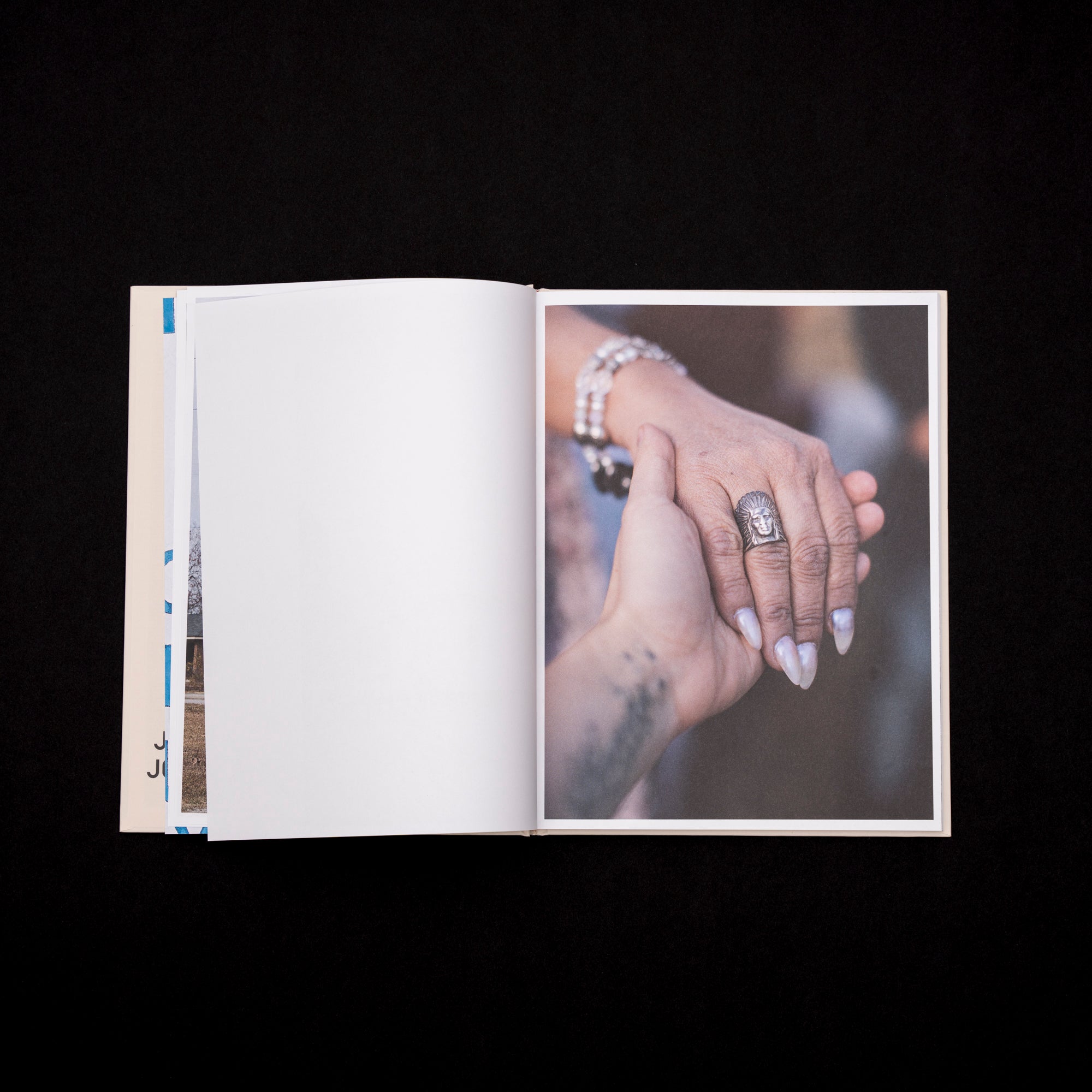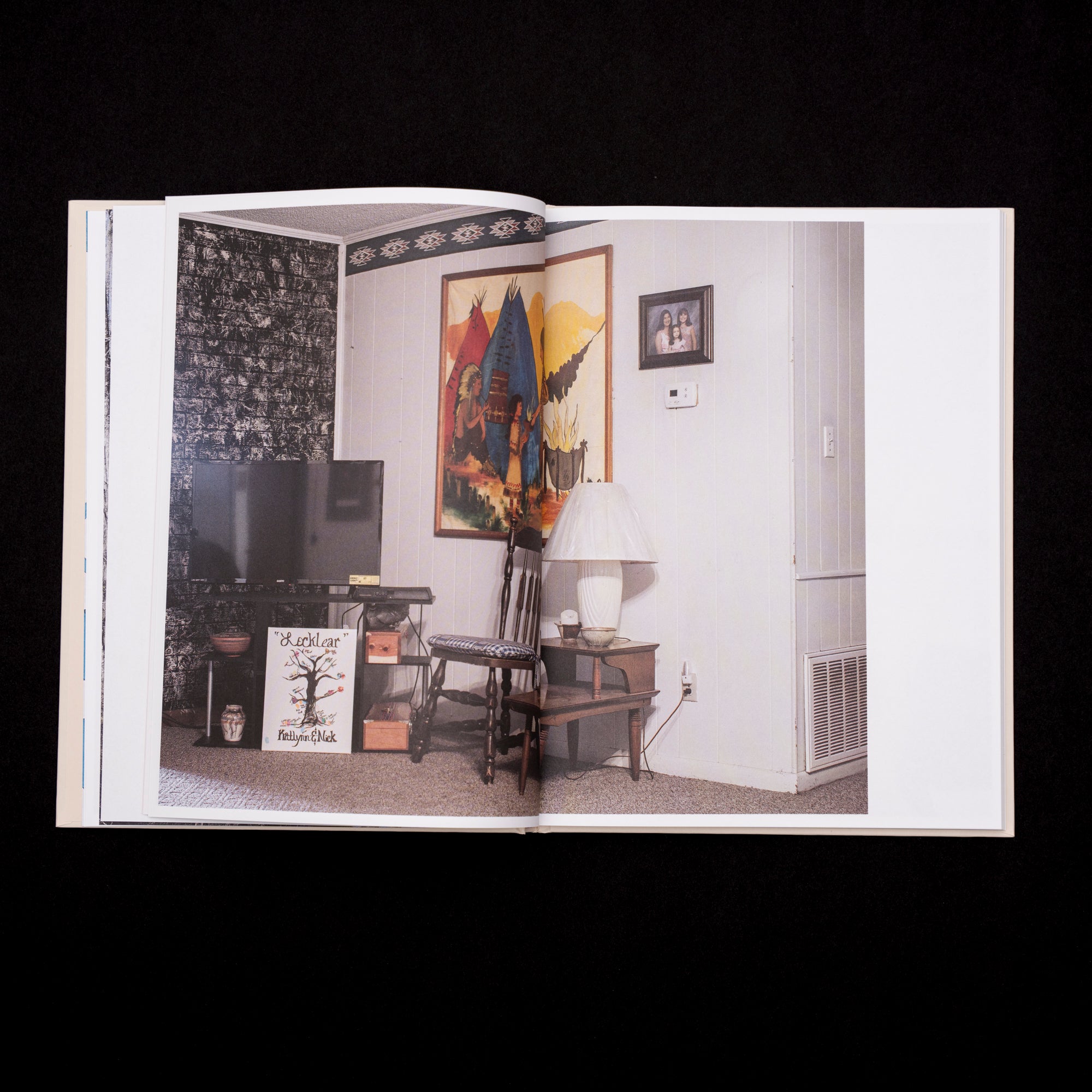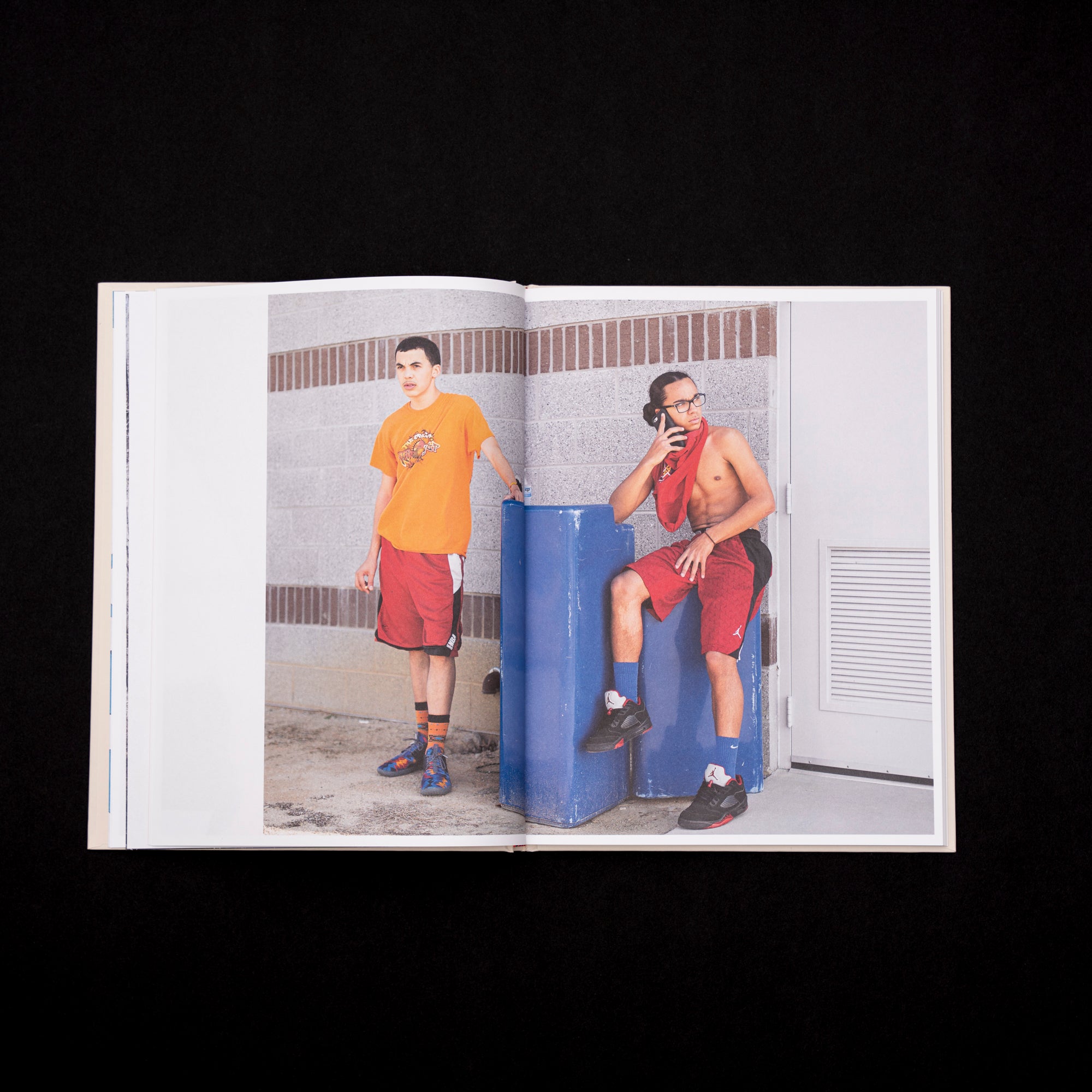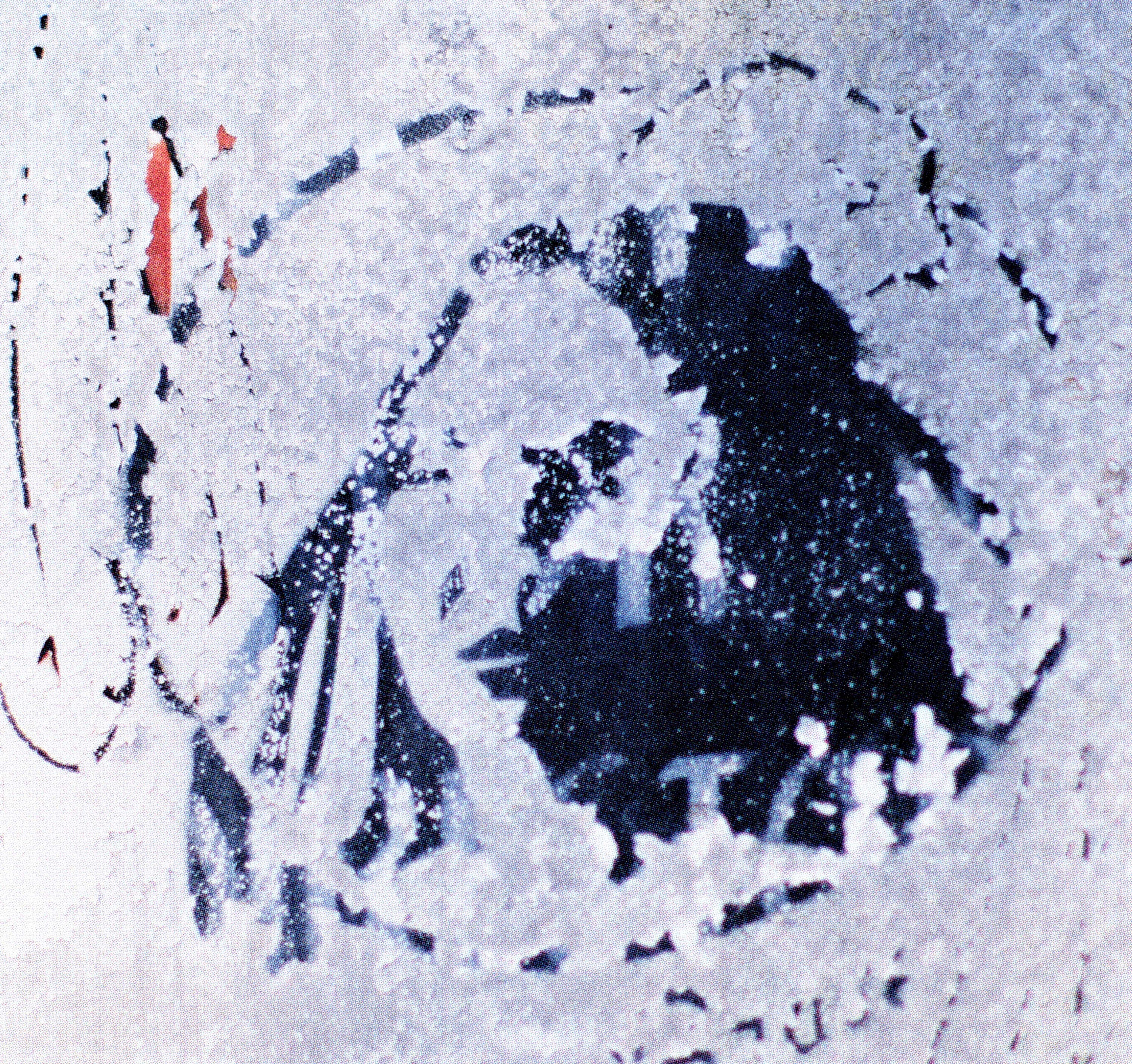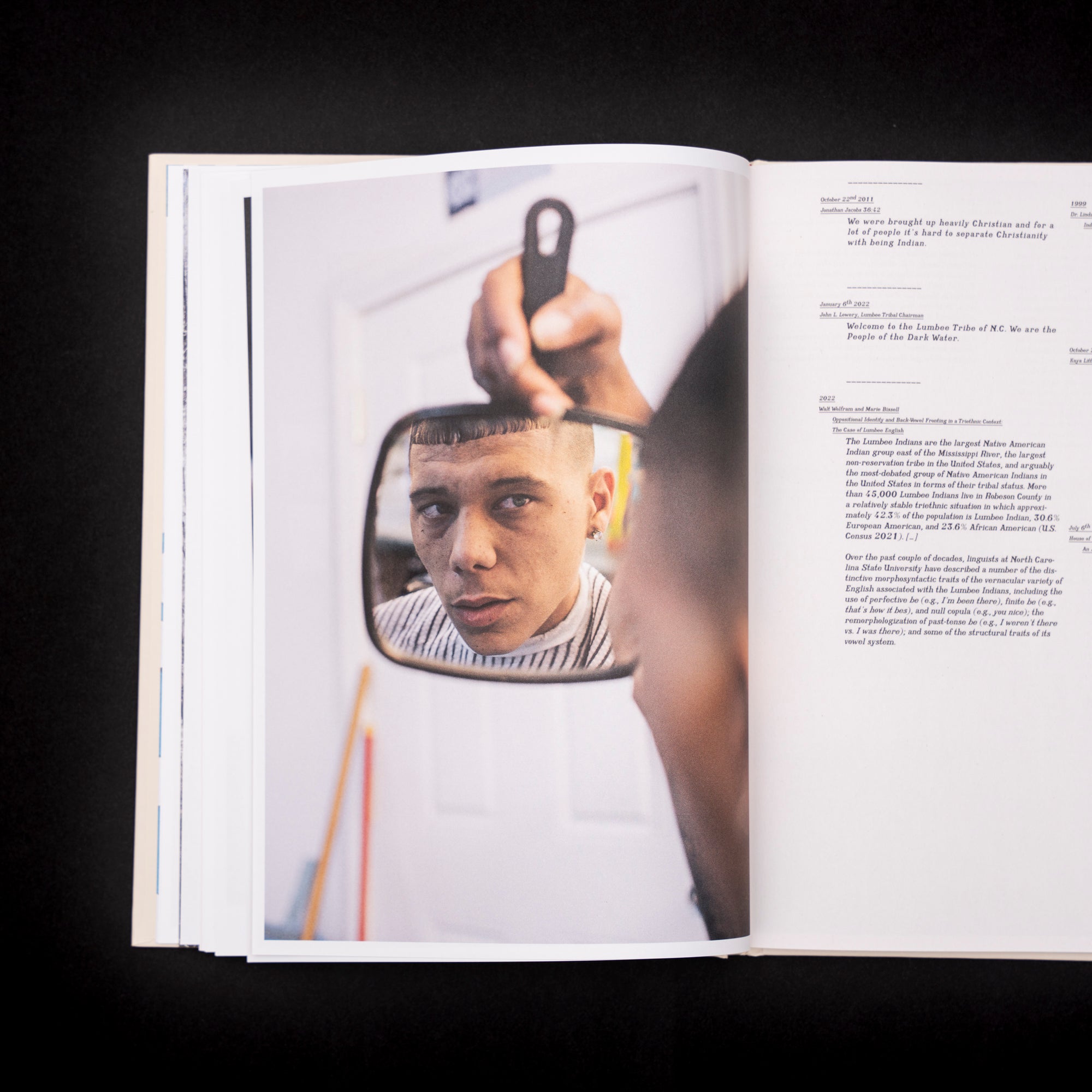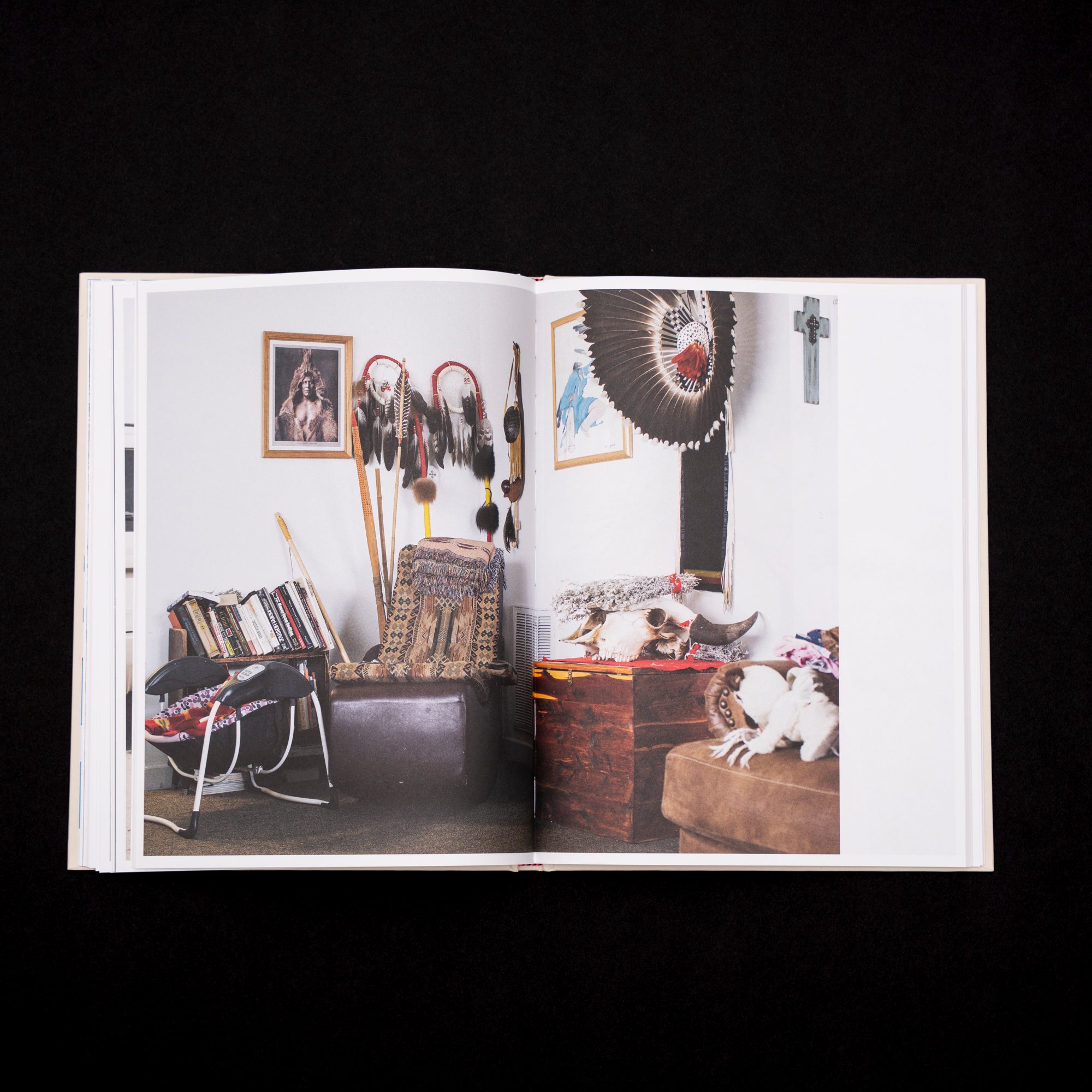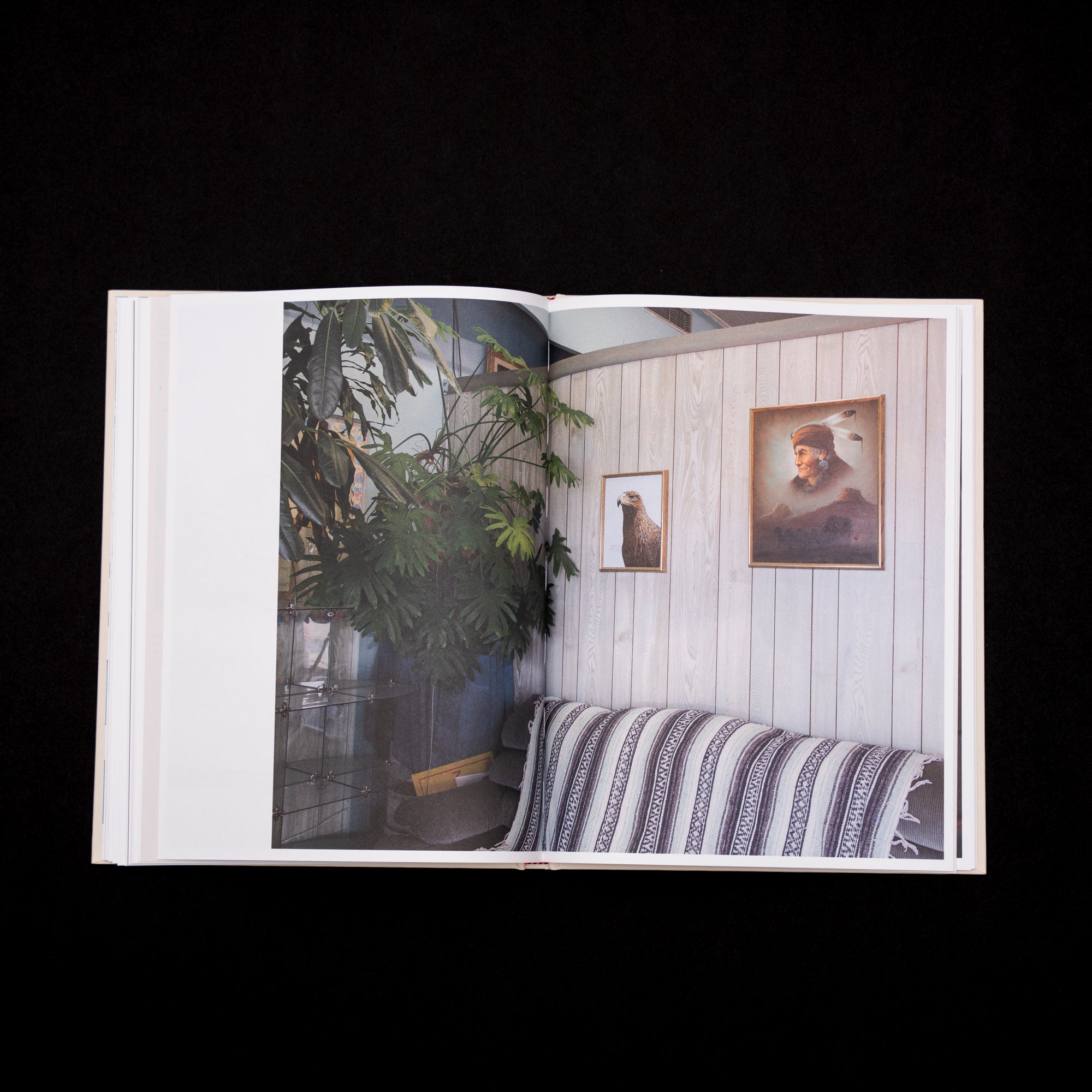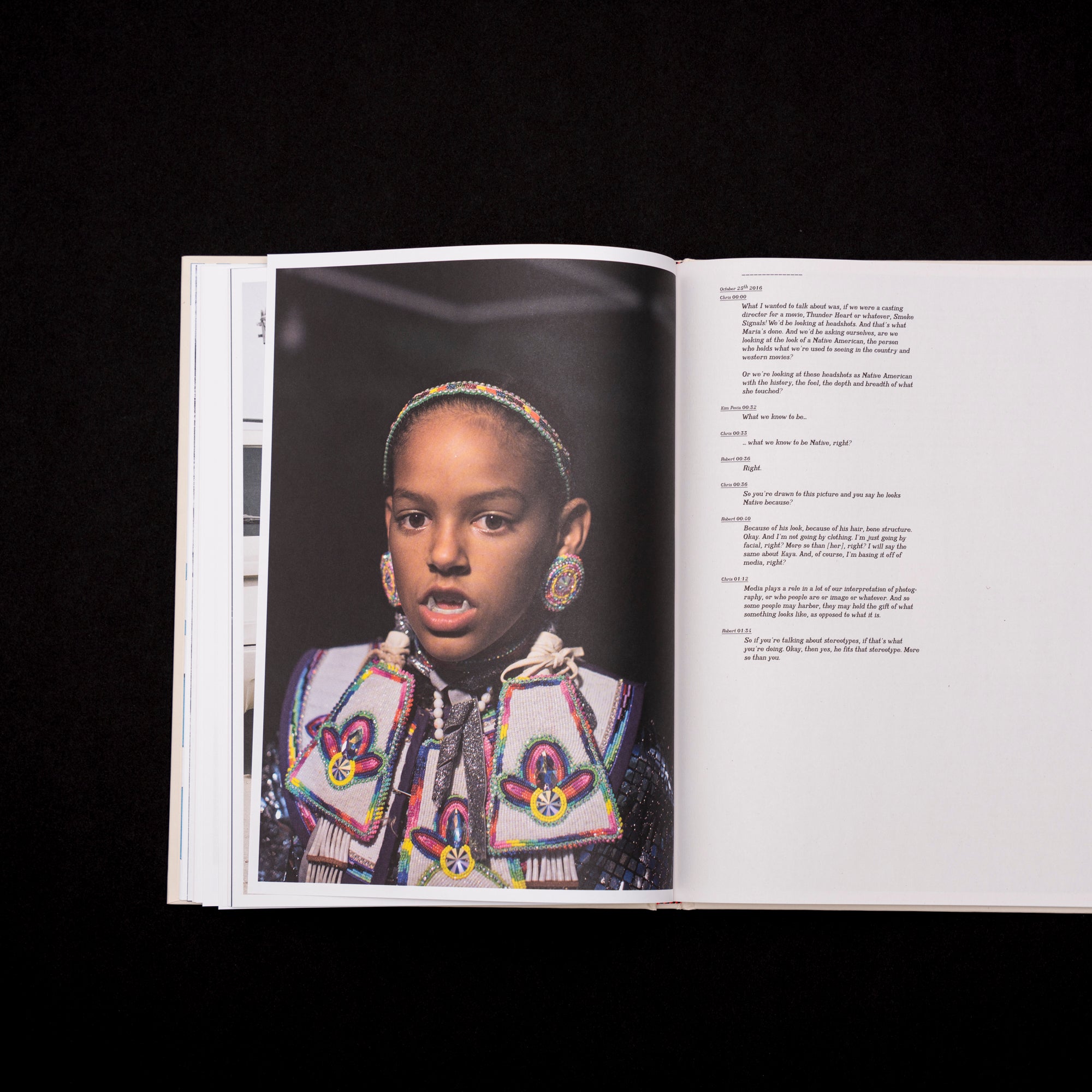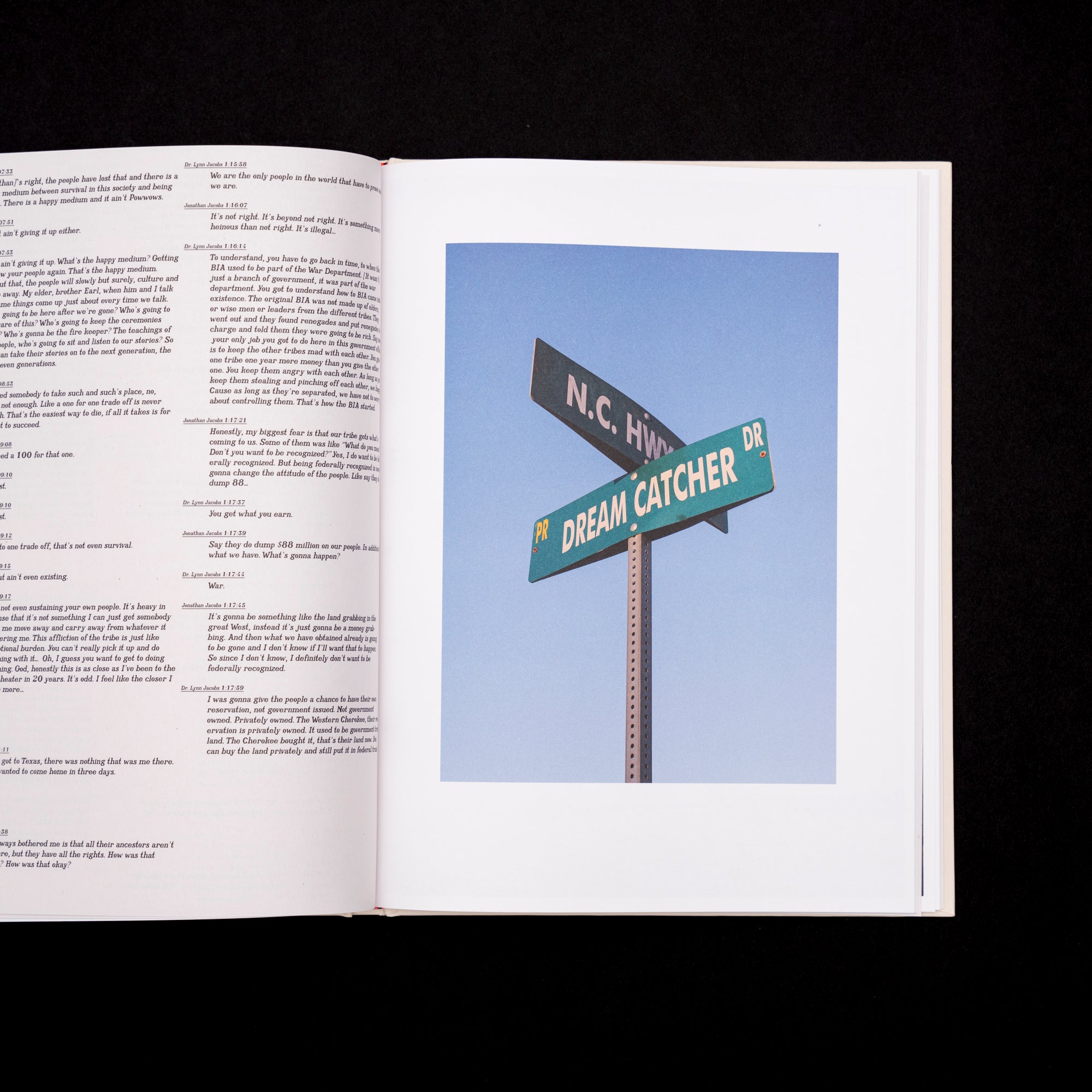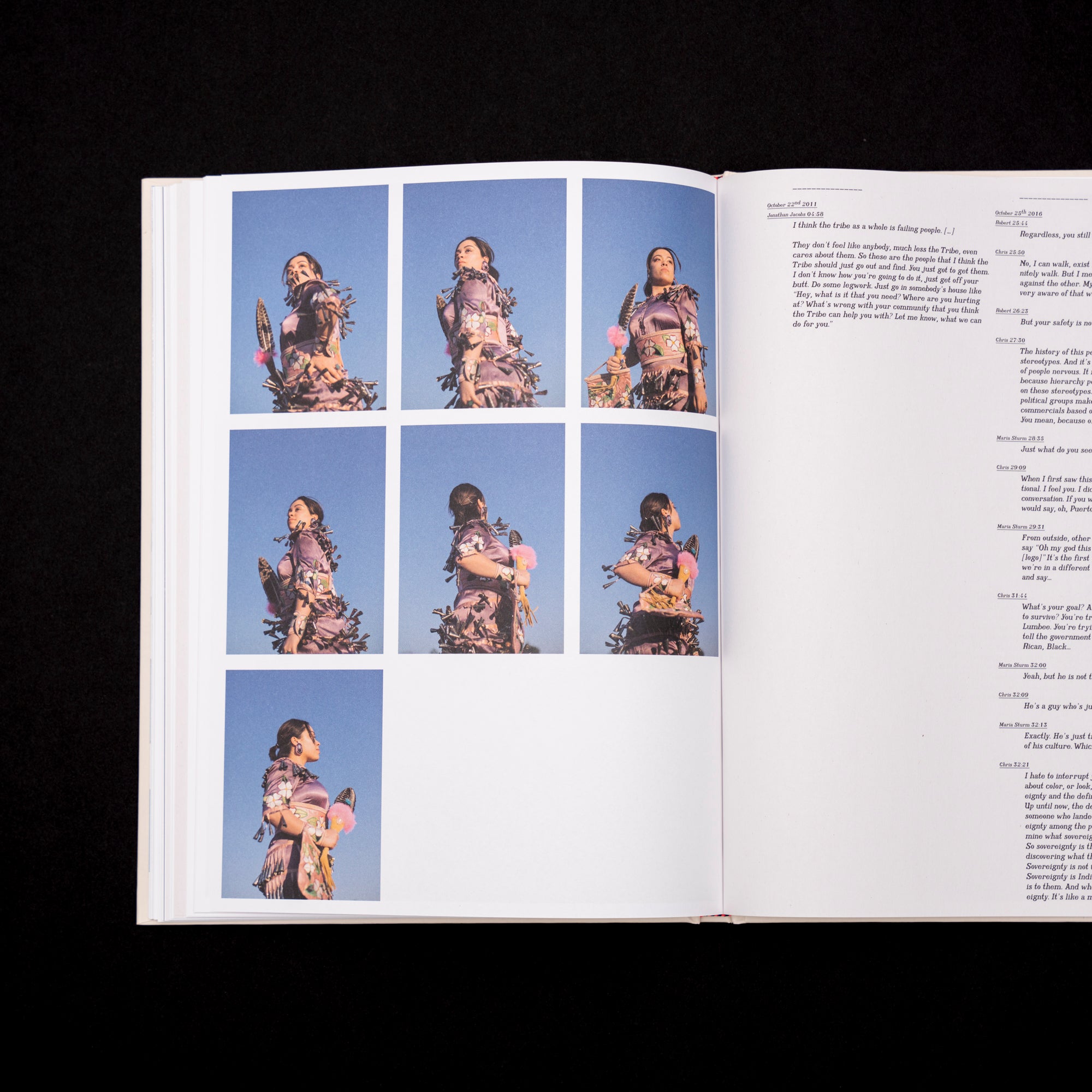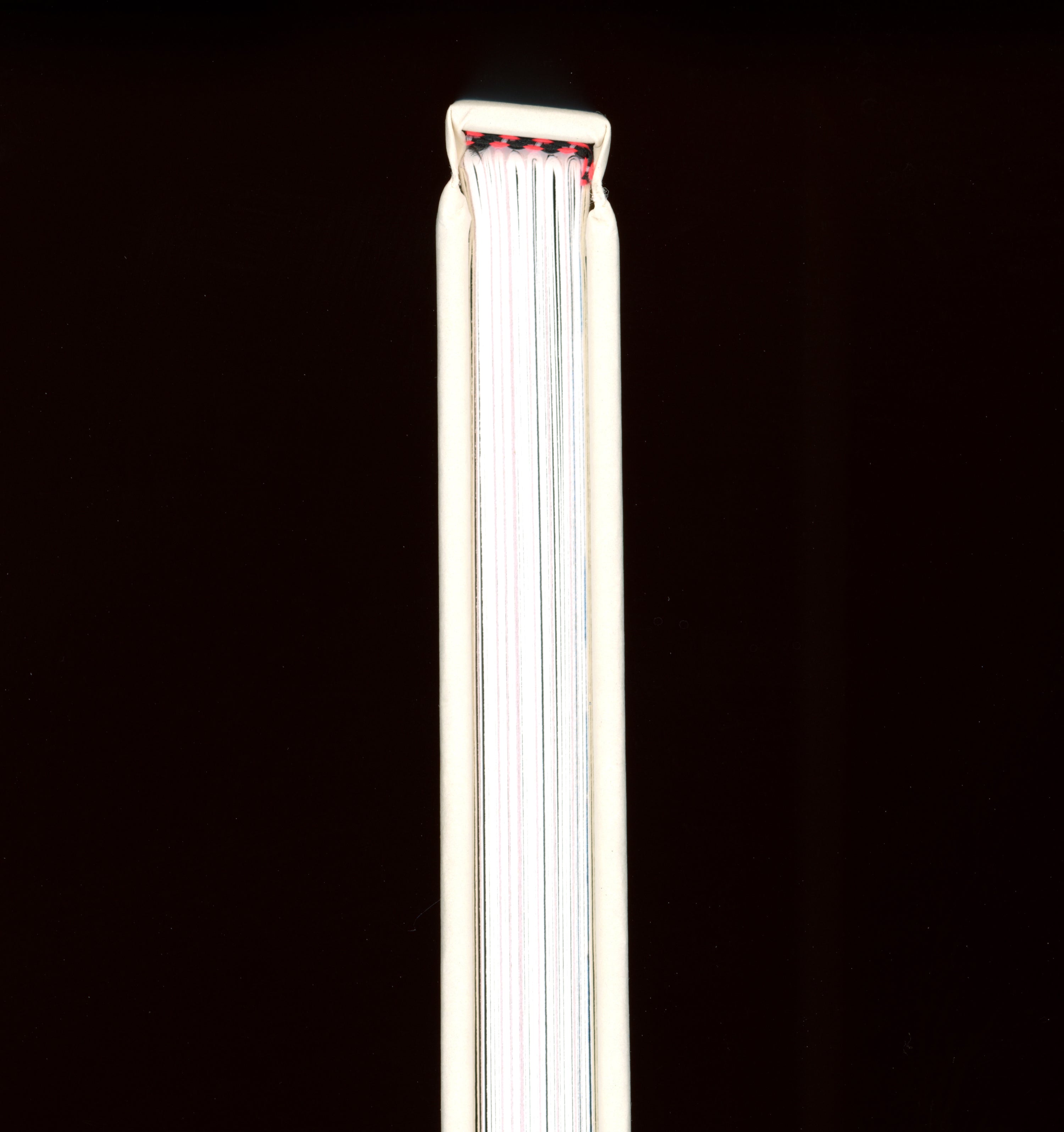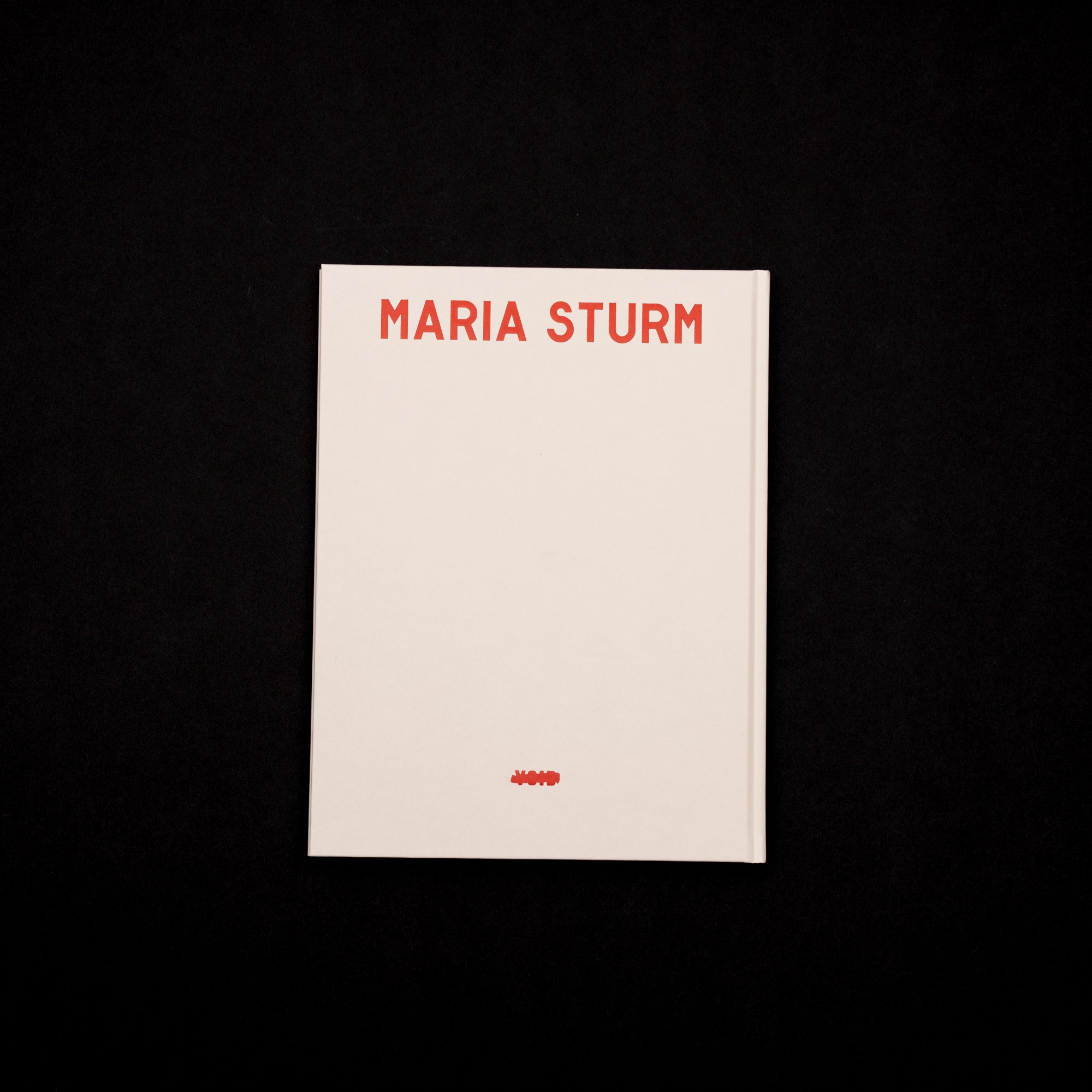YOU DON’T LOOK NATIVE TO ME by Maria Sturm, Void
8.6 × 11.4 in
112 pages
Hardcover
Void, 2023
First edition of 500
In 2011, Maria Sturm began to photograph the lives of young people from the Lumbee Tribe around Pembroke, Robeson County, North Carolina. Through the process of documenting their lives, Sturm began to question her own understanding of what it means to be Native American. Her new book You Don’t Look Native to Me combines photographs with interviews and texts to preconceptions and show Native identity not as fixed, but evolving and redefining itself with each generation.
Pembroke is the tribal seat of the Lumbee Tribe of North Carolina, the largest state-recognised tribe east of the Mississippi River. Although the Lumbee Tribe is state-recognised, they are federally unrecognised and do not have a reservation nor receive financial benefits from the federal government. The Lumbee name was voted for in 1952 to unite all tribes in the area in an attempt to gain federal recognition. Their tribal status remains one of the most debated in the United States.
Sturm’s photographs, at first glance, appear to depict the daily life of an archetypal American community. On closer inspection elements of hybridity between heritage and contemporary life are revealed—a street named ‘Dreamcatcher Drive’, a ‘Native Pride’ baseball cap with feathers, Halloween fangs on a Tuscarora child in regalia—in the town where nearly 90% of the population identify as Native. The protagonists of Sturm’s photographs present themselves as individuals with their own unique identities and shared culture. The presence of Native symbolism—on street signs, pictures on walls, on cars, on shirts and as tattoos—shows how a stereotypical image is often presented back to them. The book’s title You Don’t Look Native to Me is borrowed from a quote familiar to many residents of Robeson County and encapsulates the discrepancy between their identity and preconceptions of others.
